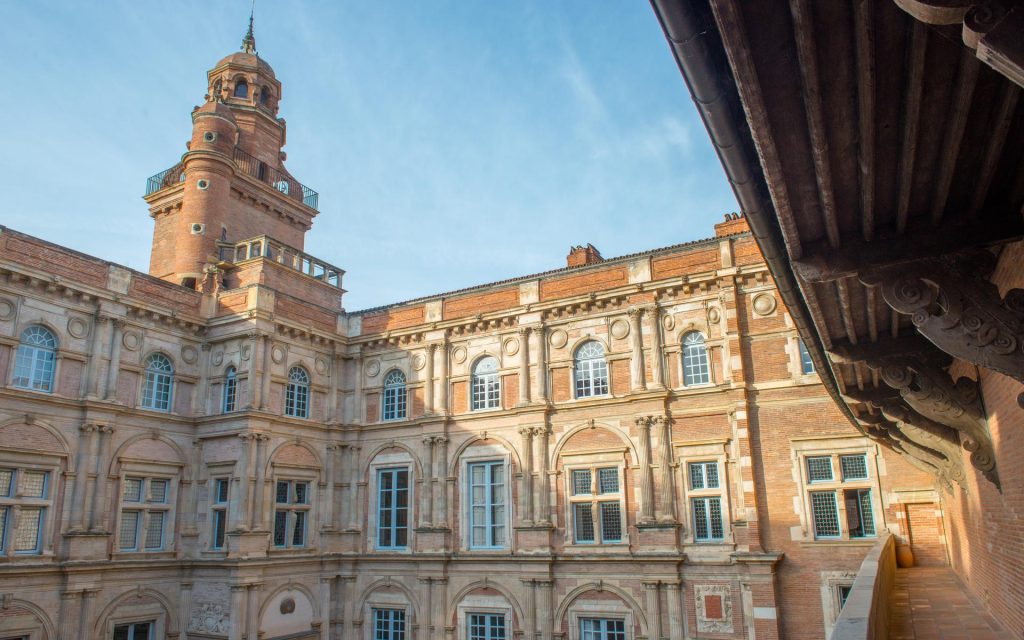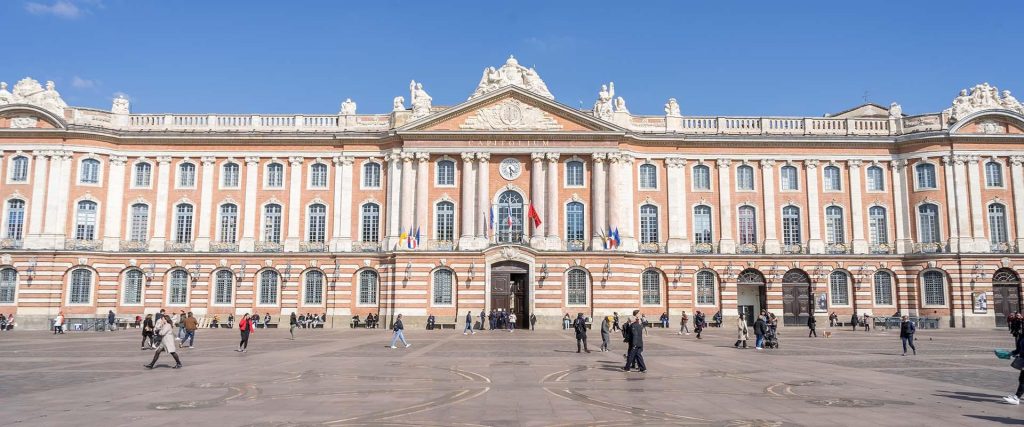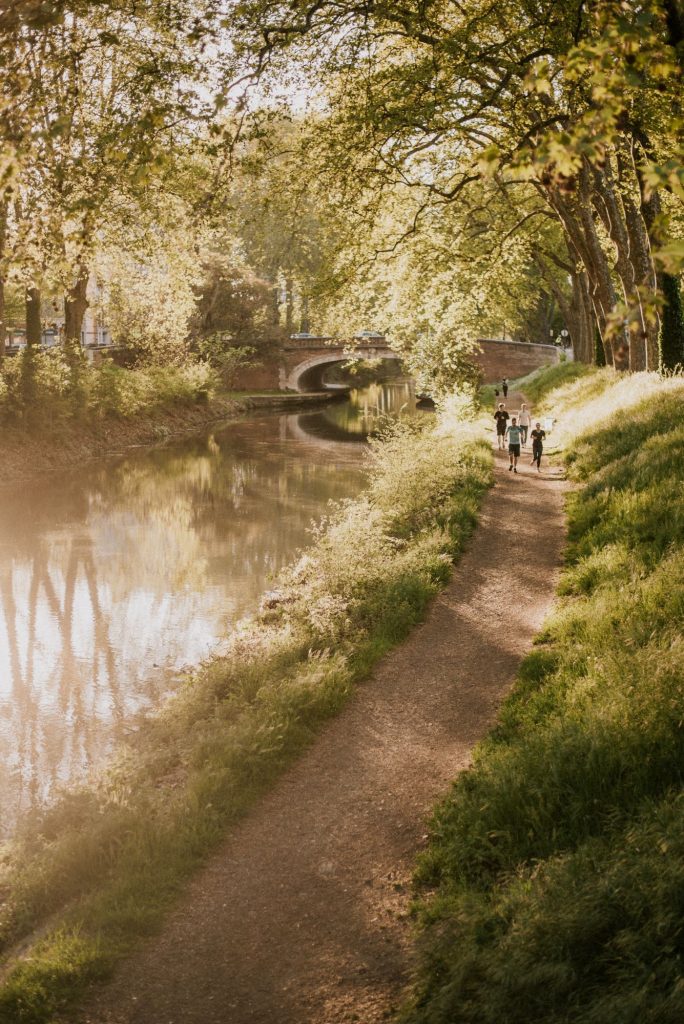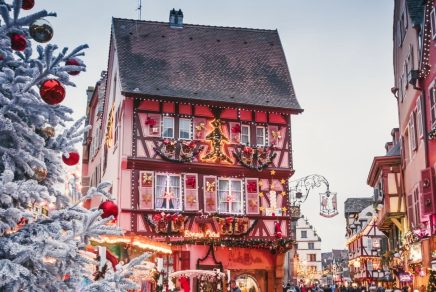This city has it all! Toulouse, the gateway to southwestern France, is young thanks to its university student population; dynamic thanks to its aeronautical industry (in a word: Airbus); romantic thanks to the Garonne River and the Midi Canal that flows through it; and a gourmet paradise.
People love Toulouse, a human-scaled city, because they enjoy strolling in its historic quarters. They adore the city’s cornucopian markets, its museums and the cultural events that enliven its summers.
If you’re one of the lucky ones who’ll be discovering for the first time the marvels that “la ville rose” has to offer, check out our “For All” suggestions. If you’re looking for insider tips, see our “For You” suggestions that may offer a few surprises. Either way, you’re sure to have a great time!
Things to do in Toulouse on a first visit

The quays
On the right bank of the Garonne, to admire the beautiful pink brick facades of the medieval buildings opposite, especially near the Pont Neuf. River cruises that include commentary are also available.
The Maison de la Violette
Which is housed in a pretty barge anchored in the Canal du Midi. The emblematic flower of the city is the star of jams, liqueurs and lotions made in accordance with French savoir-faire since 1993.
Chez Emile
On the lively Place Saint-Georges, to taste the real cassoulet from Toulouse with Toulouse sausage, pork and duck confit. The address has existed since the 1940s and has since become one of the jewels of Toulouse gastronomy. On sunny days, you can sit on the terrace for a memorable experience.
The Bemberg Foundation museum

Housed in the sumptuous former hôtel particulier d’Assézat, a listed building dating from the 16th century, it houses an impressive collection of artworks from the Middle Ages to the 20th century. Among the leading artists of the Impressionist and Fauvist movements are Signac, Vuillard, Gauguin, Toulouse-Lautrec, Pissarro and Monet.
The Victor Hugo covered market
On the square of the same name, for la crème de la crème of the regional produce: foie gras, charcuterie, cheese and wine. The ideal place to gather the goods for a gourmet picnic! This traditional market takes place every day (except Monday) from 7am to 1:30pm.
The Place du Capitole

The starting point for all discoveries in Toulouse. Entirely pedestrian, it allows visitors to understand at a glance why the city is so strongly associated to the colour pink. Its centre is adorned by a huge Occitan cross, which alone is worth a stop.
Did you know?
Toulouse is nicknamed “la ville rose” (“the pink city”) for the terracotta bricks used in many of its buildings. Depending on the time of day, the city takes on hues ranging from red to orange to pink.
Visit Toulouse like locals
Les Abattoirs
The vast buildings of the former slaughterhouses on the southern bank of the Garonne have been converted into a museum space dedicated to modern and contemporary art. At just 8 euros, this is a budget-friendly way to discover Toulouse’s cultural scene. And why not grab a bite at the on-site restaurant while you’re there?
Saint-Aubin Market
Situated on the square of the same name. On Sunday mornings, you can meet small producers and Toulousans in this real village market, set up under the plane trees. The stalls are numerous and varied, between the Moroccan gastronomy counter, the second-hand bookshop, the jewellery makers and the gourmet specialists with fine products of the highest quality.
The Bouquières quarter
Pick up a guide book from the tourist office, and off you go on a tour through a maze of small streets lined with pretty period houses and private mansions that have stood the test of time. Particular attention should be paid to the ancient architectural details (locks, gates, tiles, etc.) and the street signs that are in both French and Occitan! The tour starts at Place du Rouaix.
On the Canal du Midi

Rent a barge or an electric bike and explore the unique flora and fauna of this UNESCO World Heritage Site, a remarkable navigable route that has linked Toulouse to the Mediterranean Sea since the 17th century.


![Marseille_COUVERTURE[1] Marseille COUVERTURE](/wp-content/uploads/elementor/thumbs/Marseille_COUVERTURE1-rehd969x0bx0iqrlg0e2y32782i88bao83rijrgn6w.jpg)
![voyage_de_ski_dans_les_alpes_-_ski_trip_in_the_french_alps_-_COUVERTURE[1] Voyage de ski dans les Alpes - Ski trip in the French Alps - Couverture](/wp-content/uploads/elementor/thumbs/voyage_de_ski_dans_les_alpes_-_ski_trip_in_the_french_alps_-_COUVERTURE1-e1763071913669-renyn82g4stc735hil5xc0ospu44nnis74gdvy5d9k.jpg)




